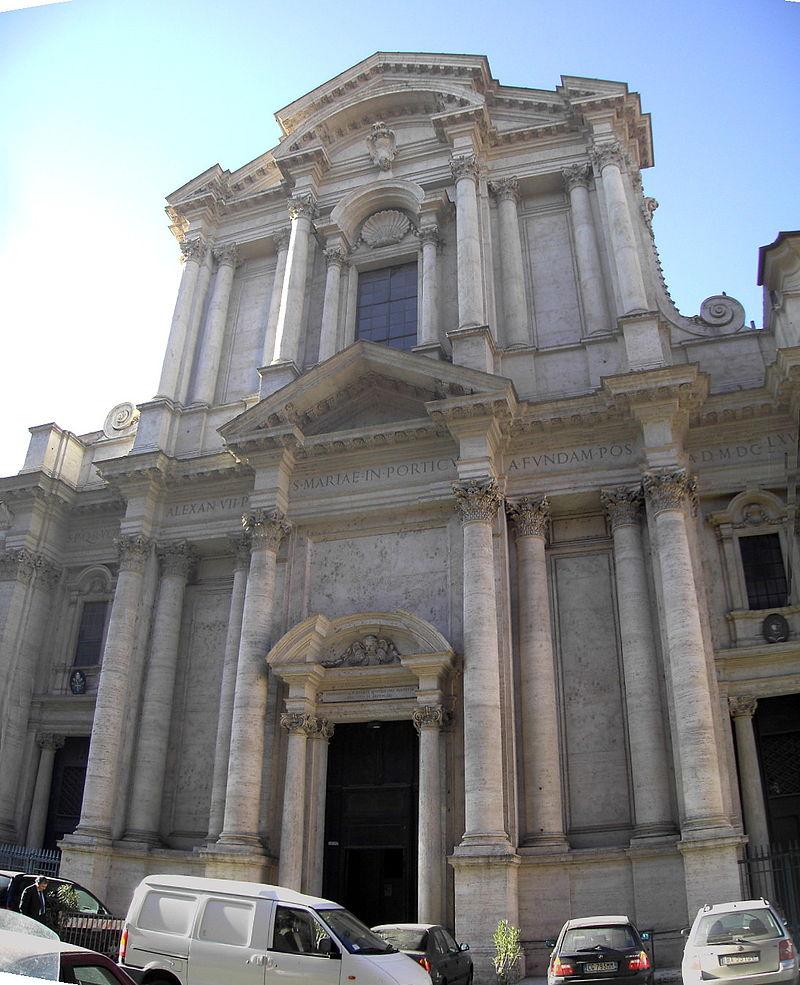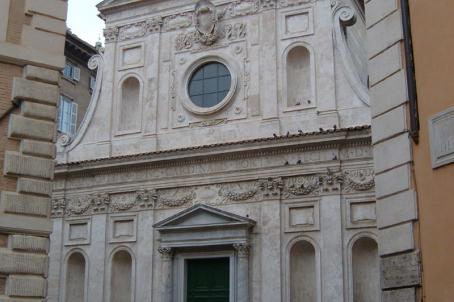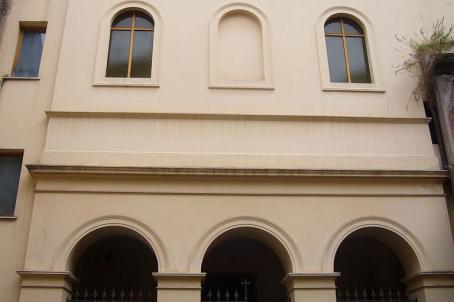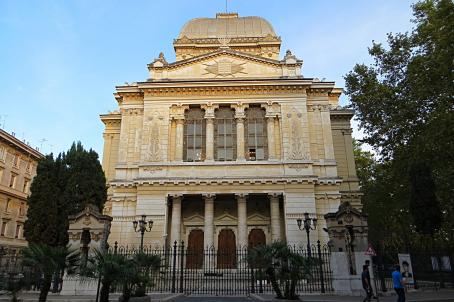Chiesa di Santa Maria in Portico in Campitelli
Santa Maria in Portico was built between 1659 and 1667 after an icon of the Virgin Mary, carried in procession through the streets, was credited with saving the town from the plague of 1656. The 25 cm high icon of the Virgin Mary is dated by style and dendrochronology to the 11th century. It used to be in the old oratory of Santa Gala, now demolished.






